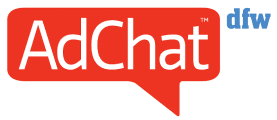Original Content: An Interview With Cynthia Corsetti
Be self-aware — it’s important to scan yourself and see how you are showing up today. How are you emotionally and physically? What is your environment like today? Perhaps that flat tire on the way to work has you a bit out of sorts — maybe not the best time for that staff meeting. One must be mindful and present to hold space for another.
Empathy, the ability to understand and share the feelings of another, is increasingly recognized as a pivotal leadership trait. In an ever-evolving business landscape, leaders who exhibit genuine empathy are better equipped to connect, inspire, and drive their teams towards success. But how exactly does empathy shape leadership dynamics? How can it be harnessed to foster stronger relationships, improved decision-making, and a more inclusive work environment? As part of this series, we had the pleasure of interviewing Christy Honeycutt.
Christy Honeycutt is a humancentric talent acquisition executive with over 20 years of experience accelerating talent outcomes for her clients. She is known for her niche experience within Recruitment Process Outsourcing and has been instrumental in designing and executing hiring practices resulting in tens of thousands of hires. When Christy’s not reimagining talent practices through the latest and greatest AI and hyper-automation technologies, or speaking at conferences, you can find her actively pursuing her bucket list. Christy believes in the human experience and the importance of meeting humans where they are at, she is a proud mother, yogi, and empathy evangelist.
I was a single mom who worked as a marketing rep for a major financial institution and my travel schedule was less than desirable. A parent of my son’s baseball team noticed I never missed a game; however, I was always frazzled and working in between innings. This parent asked me if I had ever thought about getting into recruitment and can you believe I had no idea what he was talking about — I mean what is recruitment anyway? The parent explained “It’s networking and connecting the right people with the right opportunity” and just like that, I was hired! I cut my teeth on Kenexa/IBM’s RPO for United Healthcare supporting IT and marketing roles during the HIPPA rollouts and quickly became one of the top-earning contributors on the account three years running. I got bored and went into corporate recruiting where I hired over 70 individuals within my first 30 days supporting the RPO’s clients, which prompted an immediate promotion to the head of internal recruitment where I partnered with sales, operations, and implementation. I successfully launched every client onboarded at 100% capacity, on budget, and on time globally. I spent the next 17 years navigating my path through the recruitment industry where I led several enterprise clients with stellar employee retention and generous gross margins. Whilst leading operation and delivery, I noticed a slight disconnect between what the sales team sold and what the client needed and believed they had purchased, this drove a burning desire to see if I could do it differently and I did. I finished my RPO stint just before accepting an EVP, Head of People role for a major advertising agency where I led all things people; Recruitment, L&D, DEI, Employee Engagement, and HR. Approximately two years later, I was presented with two amazing career opportunities; a CTO role and SVP of Strategy and Execution. I turned down a CTO role to join my current company AppyHere as the value proposition hit close to home, “connect the right people, at the right time, to the right opportunity.” As a country girl from Oklahoma, I enjoy championing the underserved talent community and in this case, it’s our frontline workers. I have had the privilege of working for and with some amazing organizations, brands, and humans over my career such as Korn Ferry, IBM, Ford, GM, CVS, Air Canada, Avello, HPE, Spirit Aeroystems, Baker Hughes, Anthem, and many more. Every interaction and experience prepared me for my next challenge and I am forever grateful.
Can you share the most interesting story that happened to you since you started your career?
In the early era of Facebook, I created a community hiring event for IBM to rapidly hire upwards of a hundred headcount for an urgent client launch. I had a job to do and wasn’t given a budget or direction on how to accomplish it, so I put myself in my potential candidate’s shoes and thought — why not try it? It was wildly successful, not only did we fill all of the open jobs, we also walked away with no out-of-pocket expenses, fully staffed on time with a healthy candidate pipeline, and it was FUN! I repeated this practice when launching Eli Lily Pharmaceuticals RPO hiring and for the expansion of Futurestep to Korn Ferry — we had a line out the door! The greatest learning lesson I ever received was to lean in! “You will fail fast or soar far, regardless of the path you take both will usher in immediate growth opportunities.
What do you think makes your company stand out? Can you share a story?
AppyHere is a recruitment automation company that champions accessibility for the hourly workforce. Many companies don’t have separate hiring practices for their exempt and nonexempt roles (it’s like oil and water) forcing the hourly workforce into white-collar practices such as requiring a resume, and long-form applications, many of which require a computer to complete. When you think about the front-line workforce over 90% utilize their mobile phone as their computer, most don’t have resumes, and many apply to an average of seven jobs at a time, approximately 50% of those candidates will never hear back from the employer on their status and those that do hear back often have already secured another form of employment. It’s an outdated and expensive practice! COVID taught us how crucial our frontline workers are, AppyHere is passionate about elevating their experience, and improving their odds of employment, whilst bringing employers and our communities the service we desperately need. Our offerings are made for and by HR practitioners.
You are a successful business leader. Which three character traits do you think were most instrumental to your success? Can you please share a story or example for each?
- Transparent — I don’t believe in office politics, I do believe in the power of teams, collaboration, and finding the best path to success together. Years ago, I was prepping for a quarterly business review and my team uncovered some unique opportunities for continuous improvement; however, it didn’t put the client in the best light. I scheduled a call with the internal client stakeholders to walk through the findings and obtain their points of view before offering my recommendation. Through this approach, I gained trust, and the client and I collaborated on a thoughtful solution to keep their team compliant.
- Mindful — being mindful is a technique that focuses one’s awareness on the present moment. A mindful approach is particularly helpful when approaching stressful situations and relationship conflicts. By being mindful you can scan yourself, your emotions, and your environment before engaging others giving you a strong base to pivot from as needed.
- Agile — By definition is the ability to think, understand, and quickly move. Some call it multitasking and others call it insanity, I call it home base. Agility is a prerequisite for a successful career in human capital management. If you managed employees during COVID’s boomerang back to the office era you received your MBA in agility!
Leadership often entails making difficult decisions or hard choices between two apparently good paths. Can you share a story with us about a hard decision or choice you had to make as a leader? I’m curious to understand how these challenges have shaped your leadership.
By far the most difficult decision I have made as a leader was to leave an organization and my team for another opportunity. I tell my team & former colleagues “If you worked with me or for me — you have access to me,” this has been a promise I have kept for as long as I can remember. To this day I still mentor & coach former employees and offer a safe place when needed to think through a challenge or develop a strategy. I’m a very loyal individual, and leaving a team and organization comes with a lot of mindfulness. I want to ensure my organization and department have everything they need to continue down a successful path; workflows, roadmaps, insight into employees’ strengths and growth opportunities, client insights, and communication.
Ok, thank you for that. Let’s now jump to the primary focus of our interview. Let’s begin with a basic definition so that all of us are on the same page. How do you define empathy in a leadership context, and why do you believe it’s a vital trait for leaders to possess in today’s work environment?
Empathetic leadership is a technique that aids in motivating and leading teams with a humanistic approach. By practicing empathy (the ability to understand and share the feelings of another) you will create an environment of inclusivity where your employees feel valued, seen, heard, and are supportive of your business initiatives and overarching organizational goals.
Can you share a personal experience where showing empathy as a leader significantly impacted a situation or relationship in your organization?
Recently, I helped an organization centralize its shared services for HR, TA, DEI, and L&D. This was a prickly project with a lot of conflicting priorities and opinions as there were areas of overlap, and each workflow was led independently with little oversight. Needless to say, roles and responsibilities were changing as we uncovered duplication in process, tech stacks, and internal stakeholders. These conflicting elements made the team nervous, fearful, and resistant to change. I took my time with each workflow leader to understand their point of view on what was working, what wasn’t, what they would like to see, and how they thought we could get there. Upon completing this process with each stakeholder I uncovered mutual interests and common themes to help the larger team align on a way forward with each workflow leader’s invaluable “real world” insight. Together we created a centralized shared service model and proved we could do more with less and that the team was stronger together. At the end of this project, I had the team write on a whiteboard positive affirmations for each team member and the output was amazing. The team saw strengths in each other that they didn’t even know existed within themselves. This helped the team see how they were valued and what they brought to the table. Example: Joe — Agile, Thoughtful, Bold, Risk Taker, Innovator, etc. The best part of the exercise was when the team asked to take a picture of their affirmation and I later saw them framed and pinned on their desktops.
How do empathetic leaders strike a balance between understanding their team’s feelings and making tough decisions that might not be universally popular?
At the end of the day, you will never make everyone happy. Leaders must take into account facts and data as a baseline for business decisions. Being empathetic will help guide you in the best course and aid in the delivery of messaging.
How would you differentiate between empathy and sympathy in leadership? Why is it important for leaders to distinguish between the two?
Empathy by definition is the ability to understand and share the feelings of another. Empathy is a leadership competency that significantly impacts others by being able to understand another’s experience and frame of reference. Sympathy on the other hand is more commonly related to pity and sorrow.
Empathy — honoring the feelings and thoughts of another, I often think of empathy in the Yogi fashion of NAMASTE — the light in me honors the light in you!
Sympathy — similar to the greeting card, it is an acknowledgment of someone’s loss or misfortune.
What are some practical strategies or exercises that leaders can employ to cultivate and enhance their empathetic skills?
A few key practical strategies leaders can employ to aid in their path to empathetic leadership are:
- Listen more talk less.
- Meditate & reflect, and ask yourself how your showing up today.
- Scan & monitor your personal feelings, environment, etc. before engaging your team, this ensures you are showing up authentically and purposefully.
- Don’t read the tone in a text or email, try to connect in person or virtually.
How can empathy help leaders navigate the complexities of leading diverse teams and ensure inclusivity?
We are a honeycomb of diversity from age, sexual orientation, religion, economic background, race, educational background, and so much more. Our teams regardless of the level of diversity seen or unseen must be met with empathy, kindness, and respect. Let’s take the seen diversity angle — this is dangerous as you can assume certain factors based on your understanding that may be inaccurate and/or may present bias. Now for the unseen diversity angle — learning differences, healthcare challenges &/or disabilities for example — this employee population’s needs may be overlooked if unknown. By leveraging empathy and allowing those you are charged with leading an opportunity to be seen and heard you will organically create an environment of inclusivity.
What’s your approach to ensuring that succession planning is a holistic process, and not just confined to the top layers of management? How do you communicate this philosophy through the organization?
I utilize a team coverage methodology for succession planning; cross-training team members to understand the role and impact of a colleague’s statement of work is beneficial in ensuring business continuity, whilst uncovering the employee’s strengths, interests, and motivations. Collaboration of work also lends diversity of thought and uncovers continuous improvement opportunities for the work, the business, and the individual. Creating opportunities to co-create and win together alongside recognition of work completed and results achieved is how I continually keep the team coverage methodology in line of sight.
Based on your experience and research, can you please share “5 Ways Empathy Will Affect Your Leadership”?
1 . Be self-aware — it’s important to scan yourself and see how you are showing up today. How are you emotionally and physically? What is your environment like today? Perhaps that flat tire on the way to work has you a bit out of sorts — maybe not the best time for that staff meeting. One must be mindful and present to hold space for another.
2 . Be purposeful in your connections — be authentic and genuine regardless of how you do it; face-to-face, email, text, instant message, social media, Linked-IN, etc. By showing up as your authentic self you will gain trust & respect.
3 . Be present — time is precious we all have conflicting priorities, give your team your time, your focus, and your respect. Be the best version of yourself. When employees feel seen & heard your retention will improve.
4 . Active listening — listen for cues and tone, watch for body language, listen for pause and inflection. If you listen they will tell you and you can uncover opportunities for continuous improvement
5 . Breathe and meditate — reflect on your day, your conversations, what you learned, what could you have done differently, and how your employees need you to show up for them today. This is where the magic happens! Ideas are generated positively impacting business outcomes.
Are there potential pitfalls or challenges associated with being an empathetic leader? How can these be addressed? Unfortunately, I have seen empathetic leaders put in a box as a pushover or deemed cowardly.
Empathetic leaders can be seen as slow to act, timid, overly sensitive to employee matters, and emotional. I have seen this result when sympathy and empathy are confused. When empathetic leadership is successful you will see an engaged team, strong retention, diverse thought, and improved product and delivery. Success is the consequence of empathetic leadership “if” business objections are always kept in sight.
Off-topic, but I’m curious. As someone steering the ship, what thoughts or concerns often keep you awake at night? How do those thoughts influence your daily decision-making process?
At the end of the day, I want to do what is right for my clients, my organization, our candidates, and our community. I’m constantly brainstorming ways to help my clients understand how to leverage AI and hyper-automation within their recruitment and HR workflows in a fashion not to replace their team but to enhance their team and elevate their department to become more strategic, thoughtful, and seen as thought leaders within their organization.
You are a person of great influence. If you could start a movement that would bring the most amount of good to the most amount of people, what would that be? You never know what your idea can trigger. 🙂
I’d love to start a movement of mindfulness. When humans realize how powerful their thoughts, actions, and words are and that those thoughts, actions, and words create their environment and future I believe collectively we can create a world where people thrive, ideas soar, and peace can be found. “If you are depressed, you are living in the past. If you are anxious, you are living in the future. If you are at peace you are living in the present.” Lao Tzu
How can our readers further follow you online?
https://www.linkedin.com/in/cwiseman/
Christy_honeycutt — Instagram
Thank you for the time you spent sharing these fantastic insights. We wish you only continued success in your great work!










